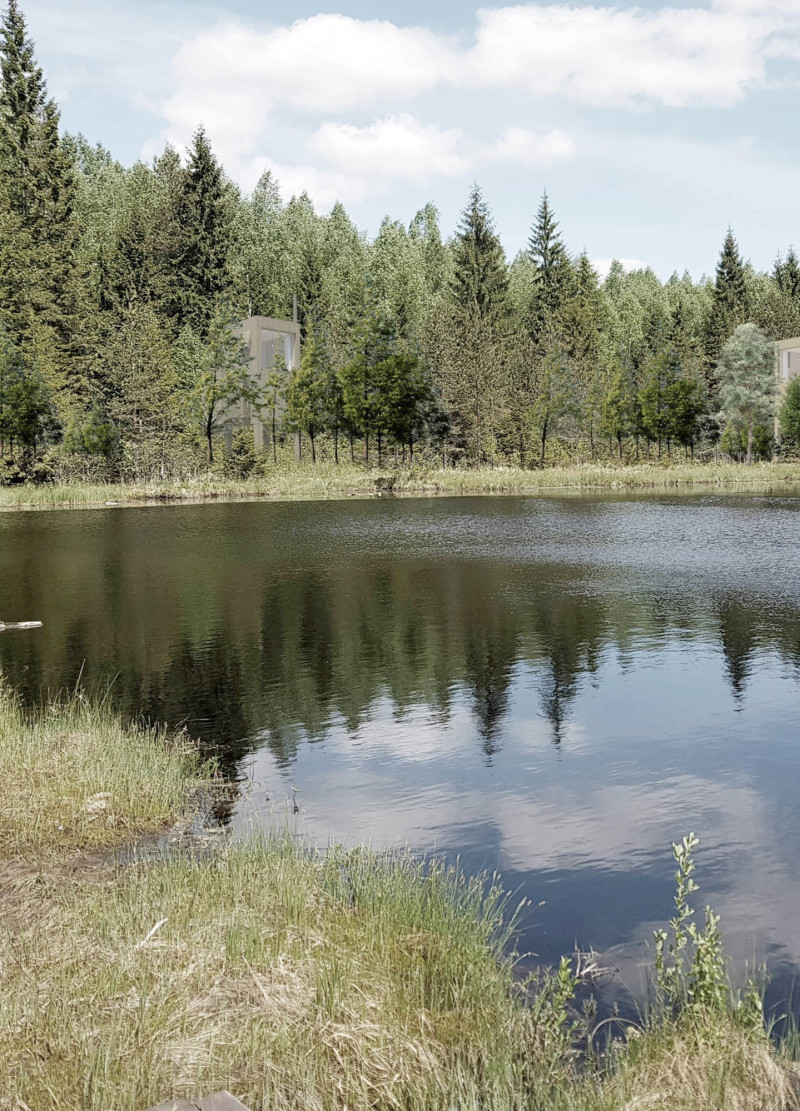5 key facts about this project
The design is conceived as a "silent creature" in the Latvian forest. It focuses on creating a peaceful space that connects with nature, inviting visitors to be mindful and present. The project aims to enhance the tranquility of the landscape while offering a retreat from the bustle of everyday life.
Structure and Form
The building features an asymmetrical design that reflects the irregular forms found in nature. Elevated above the ground, it allows flora to grow underneath, which supports the local ecosystem. The architecture changes appearance from different angles, creating a sense of curiosity and engagement for those who approach it.
Materiality
Local cross-laminated timber (CLT) is the primary material used in construction. This choice supports sustainability, as it reduces the environmental impact of transportation. The wood provides good insulation, keeping the interior warm and comfortable. It also adds a natural feel to the space, reinforcing the connection between the building and its surroundings.
Spatial Organization
Inside, the layout promotes movement while defining specific areas for different activities. Natural light filters through openings in the walls, creating inviting spaces throughout the day. The upper levels focus on meditation, providing views of the forest, while the lower levels serve practical needs like washing and cooking. This arrangement encourages occupants to remain aware of their environment while going about daily tasks.
Sustainability Features
Sustainable elements include a rain-catching system for water and a wood stove for heating. These features reduce reliance on external resources and enhance self-sufficiency. This design encourages visitors to consider their resource use and fosters a stronger relationship with the environment surrounding them.
As visitors ascend the ladder to the top level, they are greeted by a simple, open area. The design invites them to pause and reflect, enjoying the calm of the forest below and the sense of peace that comes from being part of nature.


























